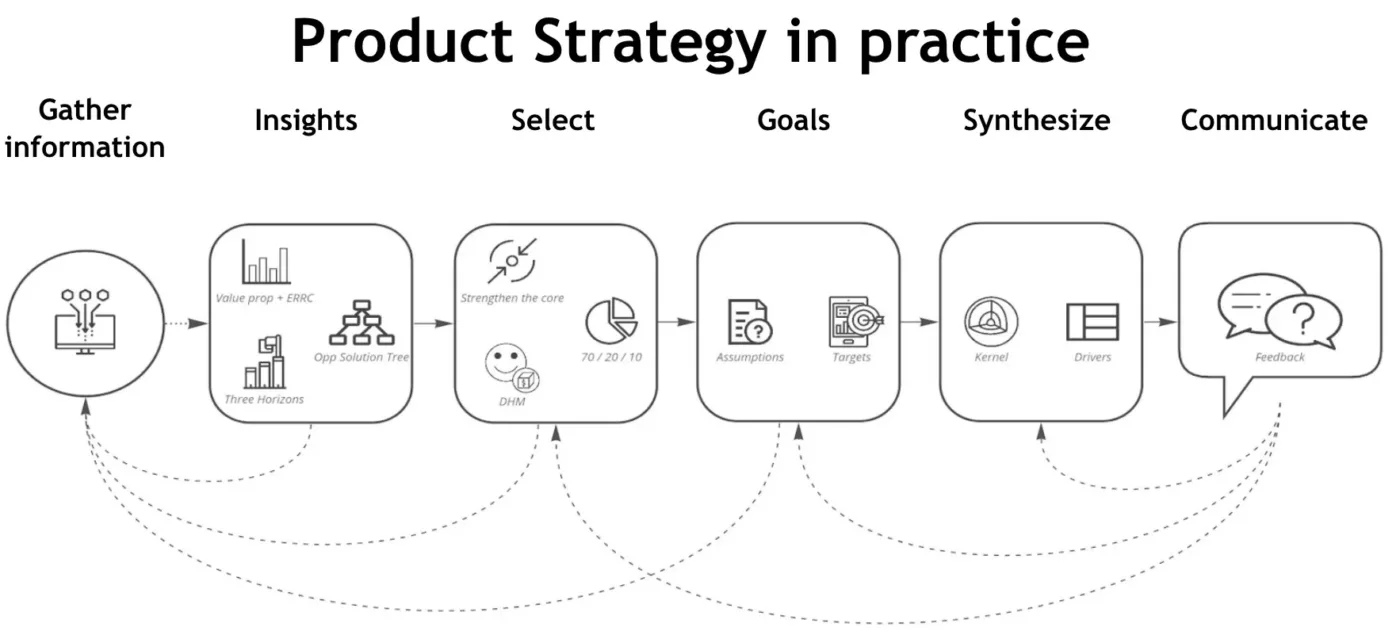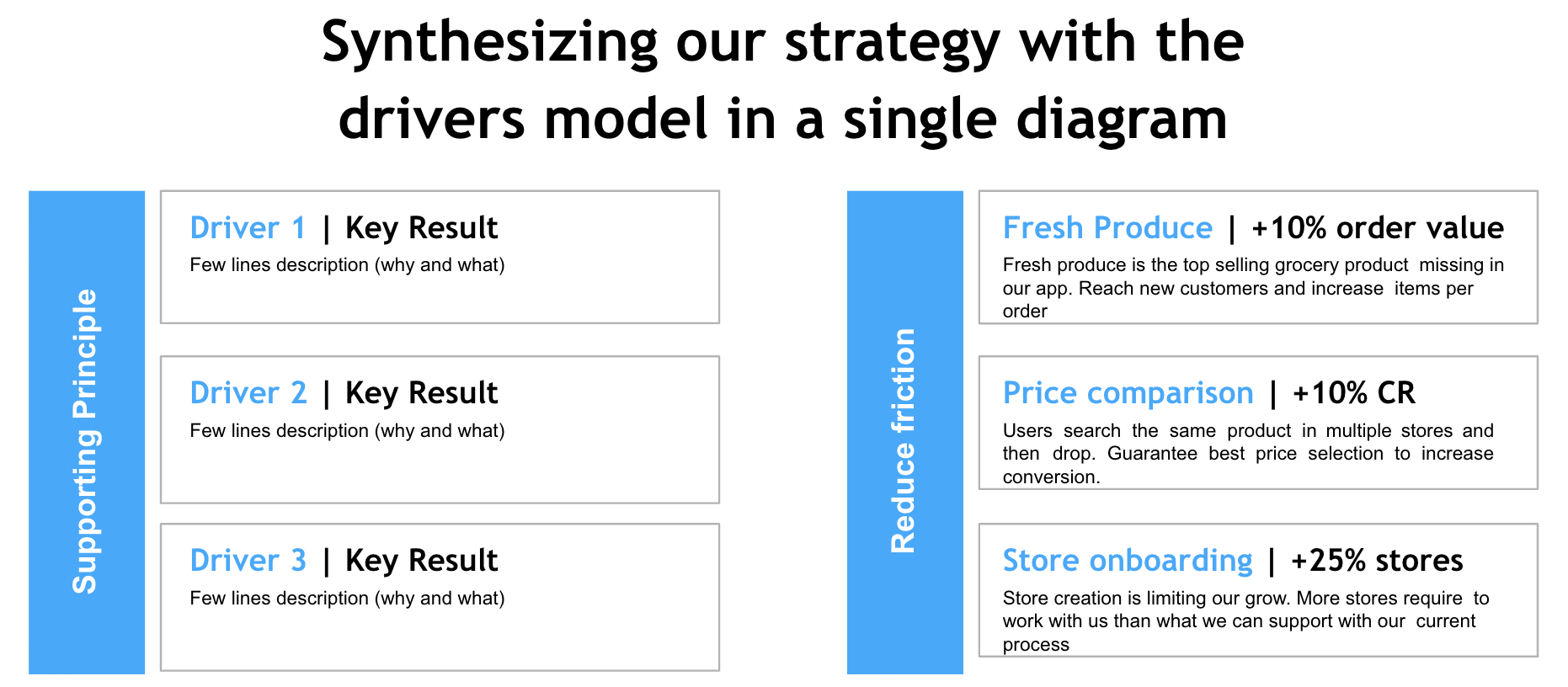Home > Blog > Expert Tips to Uncomplicate Your Product Strategy (Webinar Video Included)
Expert Tips to Uncomplicate Your Product Strategy (Webinar Video Included)

Marty Cagan, founder of the Silicon Valley Product Group, once wrote: “Most product organizations I meet don’t even have a product strategy.” If your team has a similar challenge, and you’re not sure how to develop your own product strategy, keep reading. We’ve got some expert suggestions for you.
The tips below are taken from our recent webinar — Uncomplicating Product Strategy: a Practical Approach — co-hosted by craft.io CEO & Co-founder, Elad Simon, and Product Direction author Nacho Bassino.
Why Doesn’t Every Product Team Have a Product Strategy?
Elad opened the webinar polling attendees about their top challenge with product strategy. And although he was looking for one clear winner, Elad found the attendees divided more or less evenly across four challenges:
- Defining clear objectives
- Prioritizing what to build
- Aligning with company goals
- Communicating the strategy
That’s a lot of challenges. (In the tips below, you’ll find proven best practices for handling each one.) But as Nacho added, there’s an even more fundamental reason that many organizations don’t have a product strategy: Most don’t even know what a product strategy is.
Here’s our definition:
A product strategy is a blueprint that summarizes how a company plans to provide a solution to address a specific market challenge, how the product will offer unique value to customers, and what success will look like once the company releases the product to the market.
Now let’s review a few of our co-hosts’ tips for how your team can create and successfully communicate a winning product strategy.
3 Tips for a Winning Product Strategy
1. Choose a framework to create a repeatable process.

Nacho suggested the process above, and he walked viewers through best practices for each of the six steps here.
But his larger point was that the specific framework your product team chooses is less important than that you have some repeatable framework in place. That is, you’ll want to determine the specific steps, in a specific sequence, that will help your team arrive at a well-thought-out product strategy.
Elad added that the real value of using strategic frameworks is that they help “Sharpen your strategic thinking.”
In fact, Nacho offered best-practice frameworks to help you through each step in the product strategy process above. For identifying, organizing, and scoring your insights in Step 2, for example, he recommended using the Opportunity Solution Tree approach.
2. Align your product strategy to the company’s strategy.
Another important recommendation Nacho offered was to make sure your product strategy supports your organization’s broader business objectives.
To the extent your product strategy deviates from your company’s strategy, Nacho explained, you’ll find it more difficult to get things done. The stakeholders across your organization will still be focused on the company strategy, after all, and they’ll likely ask you to do things with the product that align with the company’s business objectives. In other words, you’ll be working on conflicting agendas.
The reverse is also true, Nacho said. Keeping product and business strategies aligned will help you drive your products forward more efficiently and effectively. “The more tight you can make the bond [with your product strategy] to the company strategy, the easier it will be for you to say, ‘Okay, we’ll focus on this and say no to everything else.’”
3. Communicate your product strategy clearly, concisely, and often.
Finally, Nacho and Elad agreed that when your team has completed the steps above, and you’ve established a compelling product strategy, it’s important to distill all of your hard work and analysis into a visually clear and easy-to-digest format to share with your stakeholders.
Nacho presented a concise, single-slide hypothetical product strategy that depicts:
- Overarching principle behind the strategy
- Key drivers supporting the decision to choose this strategy as opposed to others
- Goals (OKRs)
- Assumptions

As Elad explained, keeping your product strategy artifact (in this case, a presentation slide) clear and visually uncluttered is extremely important.
When you’ve done all of your work gleaning insights, selecting strategically promising functionality to work on, establishing your OKRs, etc, “You need to synthesize all of that information into something you can use as a guiding light for your team, something people can revisit to easily remind themselves of what we need to do — and more important, why we’re doing it. You can’t do that if your strategy is 60 slides.”
Bonus Tip to Create and Share Your Product Strategy Effectively
As Elad added, one key to building and communicating a successful product strategy is to centralize as much of the product content you’ll be working from — backlog prioritization, strategic roadmapping, user feedback, capacity planning — in a central environment.
Doing so will help you tie your strategy to execution, see at a glance the cascading effects of changing any of your plans or priorities, and make sure you’re always connecting strategy to your broader business objectives.
With that in mind, we have two final suggestions. First, watch the on-demand product strategy webinar. You’ll find great suggestions and ideas for creating a winning product strategy.
Then, if you want an easy way to centralize all of this strategic product content to keep your teams aligned, try our end-to-end product management platform.

Ready to centralize your product data
on the industry’s favorite product management platform?
Try craft.io for free


